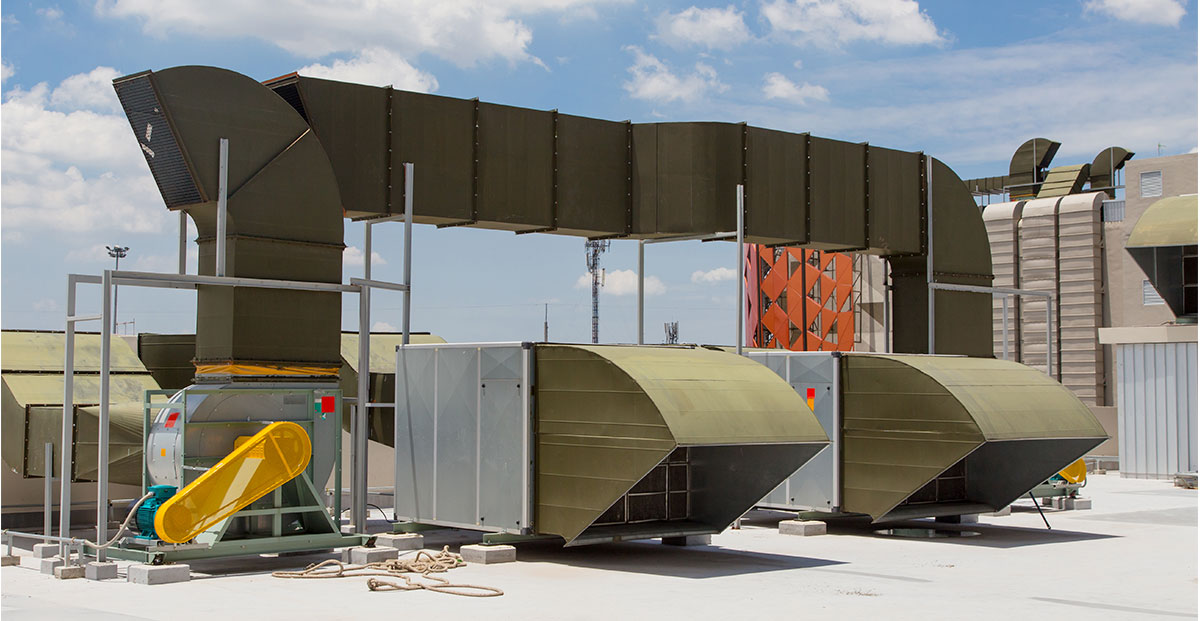When it comes to commercial and industrial facilities, building owners often choose to install equipment on the roof. This frees up interior space to be used for more productive means. However, rooftop equipment does carry risks and safety issues, as well as access and mobility threats. These challenges and threats can be eliminated using rooftop equipment supports and access methods allowing for safety and proper management of all rooftop areas and equipment.
What Equipment Gets Stored on the Rooftop, and Why?
Businesses erect a whole laundry list of equipment on their rooftops. Rather than spelling it all out, let’s look at some common examples.
- HVAC Units and Ducts
- Pipes and Plumbing Systems
- Electrical Cabling
- Solar Panels
- Generators
None of the equipment above—except for solar panels—necessarily has to be mounted on the roof. With that said, this equipment tends to be loud, bulky, unsightly, or dangerous—or a combination of all four. Placing bulky equipment on the rooftop means that there’s more space inside the building for tenants. Storing loud and unsightly equipment on the rooftop makes life easier for occupants. Keeping dangerous equipment on the rooftop makes tenants safer.
Some equipment represents a value-add for the building itself. Solar panels help lower energy costs, improve the building’s LEED certification, and can even provide some thermal management by keeping the rooftop in shade. By placing a battery backup on the roof, buildings can run off stored electricity for a few hours in the event of a power outage—again without taking up valuable indoor space.
Without Supports, Rooftop Equipment Can Damage Commercial Roofs
If equipment is placed on the rooftop without sufficient care, then it can damage or even destroy parts of the roof structure. What’s more, routine maintenance of this equipment can also unintentionally damage the roof.
Let’s say that a pipe is in direct contact with the roof, and it begins to leak. Ordinarily the roof slope will direct water to a roof drain, but if the pipe is in direct contact with the roof, water can potentially pool around it, which will damage the roof membrane (especially in freezing temperatures). This assumes that the pipe is carrying water. In an industrial or manufacturing context, the pipe could be carrying any number of caustic, corrosive, or flammable substances.
Electrical equipment, meanwhile, can short out—which may burn the roof or cause the roof deck to catch fire, something that’s much likelier if a frayed cable is in contact with the roof surface. If a frayed cable encounters water that’s pooled on the roof surface, it can pose a severe hazard. In addition, bulky equipment such as generators and HVAC will eventually crush the insulation underneath it and may cause other structural problems.
Lastly, pipes and cable runs may be hard to distinguish if they’re lying in direct contact with the surface of the roof. This means that they pose a trip hazard for any personnel who are on the roof for maintenance or inspection. Pipes, cable runs, ducts, solar panels, and other heavy equipment should be elevated from the roof surface for the safety of all workers.
How Do Rooftop Equipment Supports Protect Roofs and Rooftop Workers?
As a rule of thumb, anything that can leak or potentially cause a fire should be elevated from the roof surface. Pipe supports and cable tray supports are the way to do that. Using a broad-based, ballasted pipe support with non-penetrating bases ensures that the pipe supports themselves don’t damage the roof.
By the same token, bulky equipment should also be kept from direct contact with the roof. HVAC and generators should be kept on platforms with ballasted bases. This spreads their weight over a larger surface area and prevents them from damaging insulation or roof decking.
Lastly, workers should be provided with roof access walkways, ramps, and crossovers. These prevent workers from stepping on and crushing insulation or tearing the roof membrane when they inspect the roof. They also allow workers to cross over pipes and cable runs safely—i.e. without vaulting them or crouching under them.
Creating a custom rooftop access system that combines walkways, ramps, pipe supports, cable trays, and equipment platforms is a holistic solution that guarantees worker safety and protects the roof itself. At PHP Systems/Design, our systems aren’t just designed to last—they’re designed to make your roof last longer as well.




